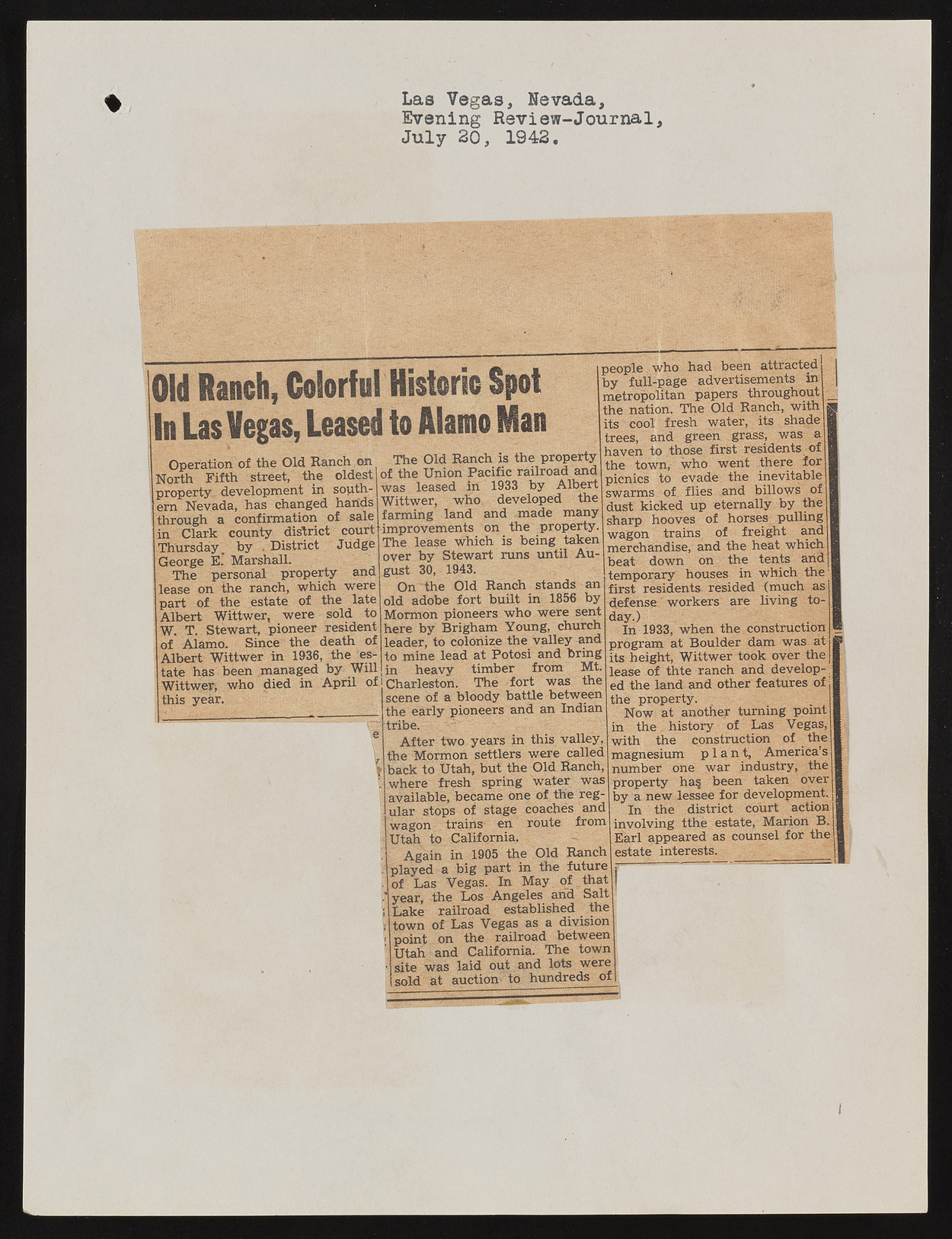Copyright & Fair-use Agreement
UNLV Special Collections provides copies of materials to facilitate private study, scholarship, or research. Material not in the public domain may be used according to fair use of copyrighted materials as defined by copyright law. Please cite us.
Please note that UNLV may not own the copyright to these materials and cannot provide permission to publish or distribute materials when UNLV is not the copyright holder. The user is solely responsible for determining the copyright status of materials and obtaining permission to use material from the copyright holder and for determining whether any permissions relating to any other rights are necessary for the intended use, and for obtaining all required permissions beyond that allowed by fair use.
Read more about our reproduction and use policy.
I agree.Information
Digital ID
Permalink
Details
Member of
More Info
Rights
Digital Provenance
Publisher
Transcription
? Las Vegas, Nevada, Evening Review-Journal, July 30, 1943. Old Ranch, Colorful Historic Spot In Las Vegas, Leased to Alamo Man Operation of the Old Ranch on North Fifth street, the oldest property development in southern Nevada, has changed haiids through a confirmation of sale in Clark county district court Thursday , by . District Judge George E* Marshall. The personal property and lease on the ranch, which were part of the estate of the late Albert Wittwer, were sold to W. T. Stewart, pioneer resident of Alamo. Since the death of Albert Wittwer in 1936, the estate has been .managed by Will Wittwer, who died in April of this year. The Old Ranch is the property of the Union Pacific railroad and was leased in 1933 by Albert Wittwer, who. developed the farming land and -made many improvements on the property. The lease which is being taken over by Stewart runs until August 30, 1943. On the Old Ranch stands an old adobe fort built in 1856 by Mormon pioneers who were sent here by Brigham Young, church leader, to colonize the valley and to mine lead at Potosi and bring in heavy timber from Mt. Charleston. The fort was the scene of a bloody battle between the early pioneers and an Indian i tribe. After two years in this valley, the Mormon settlers were called back to Utah, but the Old Ranch, where fresh spring water was available, became One of the regular stops of stage coaches and wagon trains en route from Utah to California, Again in 1905 the Old Ranch played a big part in the future of Las Vegas. In May of that year, the Los Angeles and Salt Lake railroad established _ the town of Las Vegas as a division point on the railroad between Utah and California. The town site was laid out and lots were crUH at. auction- to hundreds of people who had ? been attracted by full-page advertisements in metropolitan papers throughout the nation. The Old Ranch, with its cool fresh water, its shade trees, and green grass, was a haven to those first residents of the town, who went there for picnics to evade the inevitable swarms of flies, .and billows of dust kicked up eternally by the sharp hooves of horses pulling wagon trains of freight and merchandise, and the heat which beat down on the tents arid temporary houses in which the first residents resided (much as defense workers are living today.) ' . . | In 1933, when the construction program at Boulder dam was at its height, Wittwer took over the lease of thte ranch and developed the land and other features of the property. Now at another turning point in the_ history of Las Vegas, with the construction of the magnesium plant, America’s number one war industry, the property ha§ been taken over by a new lessee for development. In the district court action involving tthe estate, Marion B. Earl appeared as counsel for the estate interests.

